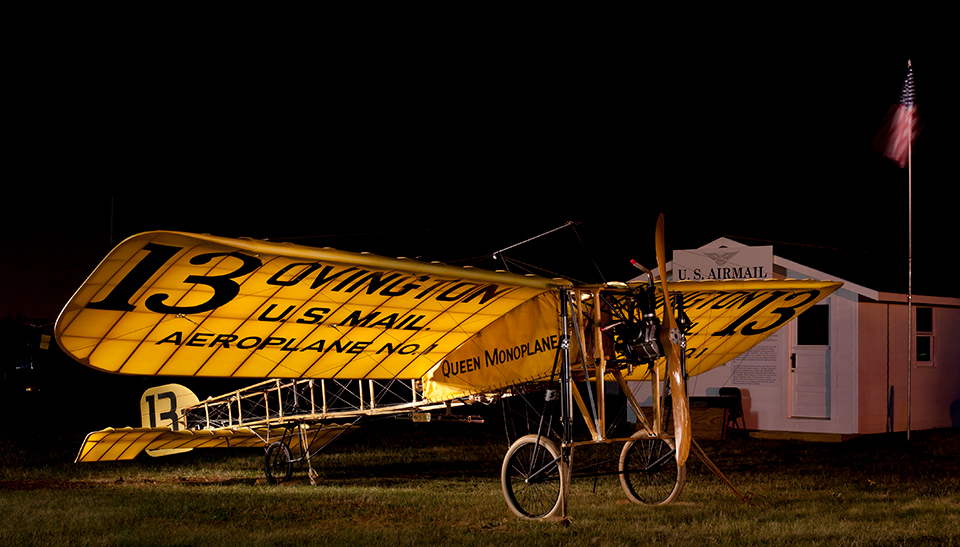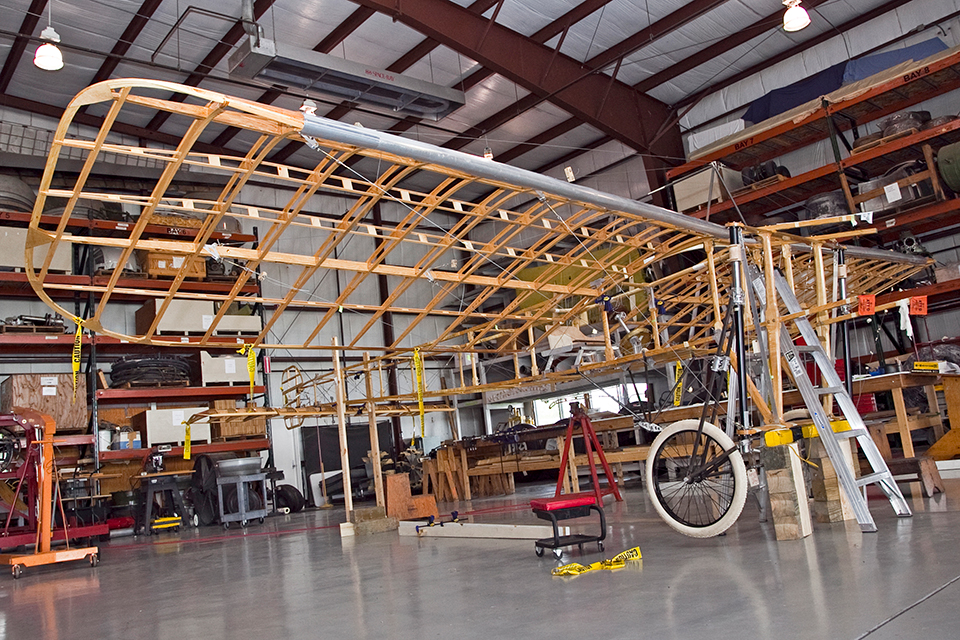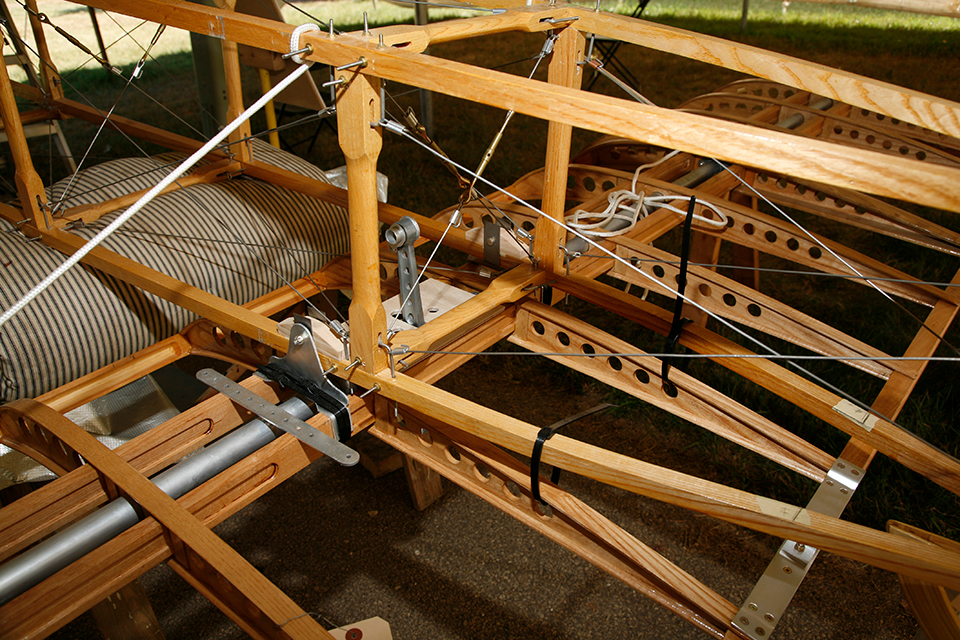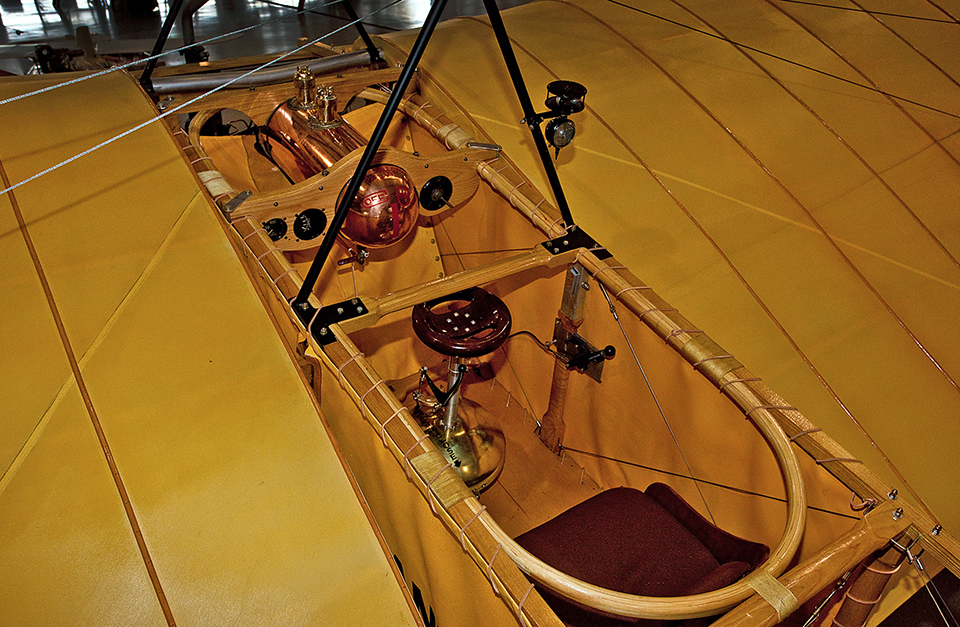Blériot XI bis Monoplane Replica - N908LB
Location: Antiques & Classics
Almost 18 years before Lindbergh’s famous flight across the Atlantic, Louis Blériot stunned the world by flying his homebuilt monoplane across the English Channel.
Louis Blériot was a French businessman who owned an automobile headlamp company, but aviation was his passion. By 1909 he had spent almost all of his family fortune, including his wife’s dowry, on 10 airplane designs, most of which did not fly. Faced with financial ruin, he continued developing two “last chance” monoplanes, saying, “Like a gambler, I had to recover my losses … I had to fly.”
The Blériot XI, a fragile monoplane with thin, highly cambered wings, was the success he needed. When its seven-cylinder engine proved heavy, a lighter, three-cylinder engine from Italian designer Alessandro Anzani was installed in May 1909. Considered by some as crude, the Anzani engine had a great attribute: it could run for almost an hour. Blériot won several awards with his Anzani-powered Blériot XI, including a 48-minute flight that covered 26 miles. But his sights were set on the £1,000 prize (considerably more than $100,000 today) offered by the London Daily Mail for crossing the English Channel. On July 25, 1909, Blériot flew 23 miles across the Channel in 36-1/2 minutes. Never mind that he crash-landed; his historic flight connected England to Europe in an unprecedented way, causing the press to gleefully proclaim, “England is no longer an island.”
The Blériot XI monoplane design rocked the biplane-dominated aviation community. Two months after his channel crossing, Blériot had more than 100 orders. He quickly reached factory capacity to meet the demand and opened a school that offered free flight training for customers. By the end of 1911 he delivered more than 500 Blériot XI models in a variety of configurations.
Among the lasting influences of the Blériot is its control system. Wing warping and elevator cables were connected to a bell-shaped cloche at the bottom of a control stick. Blériot pilots learned to use the stick to control pitch and bank and the rudder bar for yaw, a system that has endured today.
International demand for the Blériot XI soon exceeded the capacity of Blériot’s French factory. The Queen Airplane Company of New York City began building variants of the Blériot XI in 1910. EAA’s flyable replica, built around an original Anzani engine, is intended to represent one of these license-built versions.
Length: 26 feet, 3 inches
Wingspan: 28 feet, 2 inches
Height: 8 feet, 6 inches
Empty Weight: 484 pounds
Gross Weight: 748 pounds
Seats: 1
Powerplant: Anzani 3-Cylinder Radial
Horsepower: 25 hp








